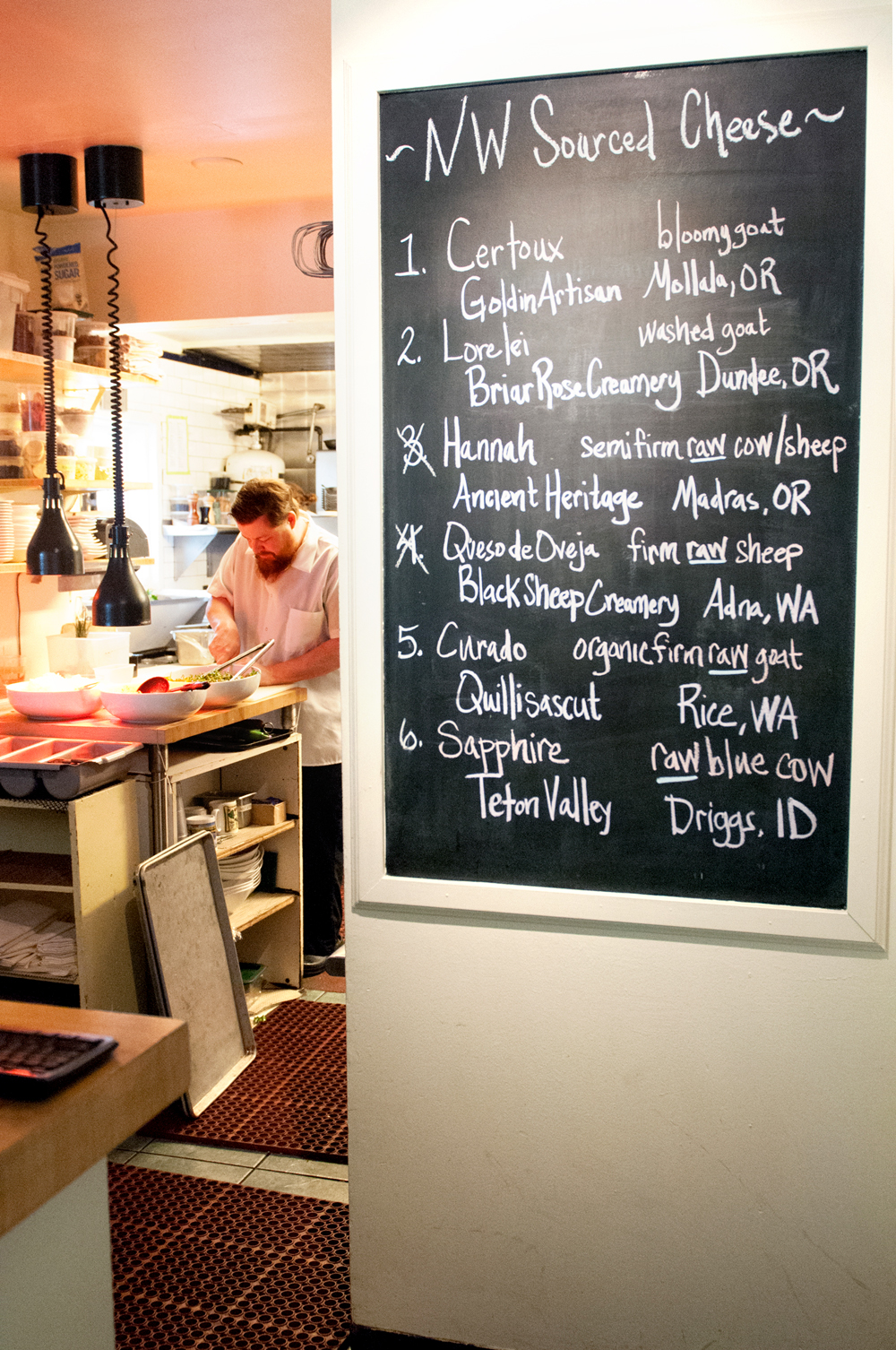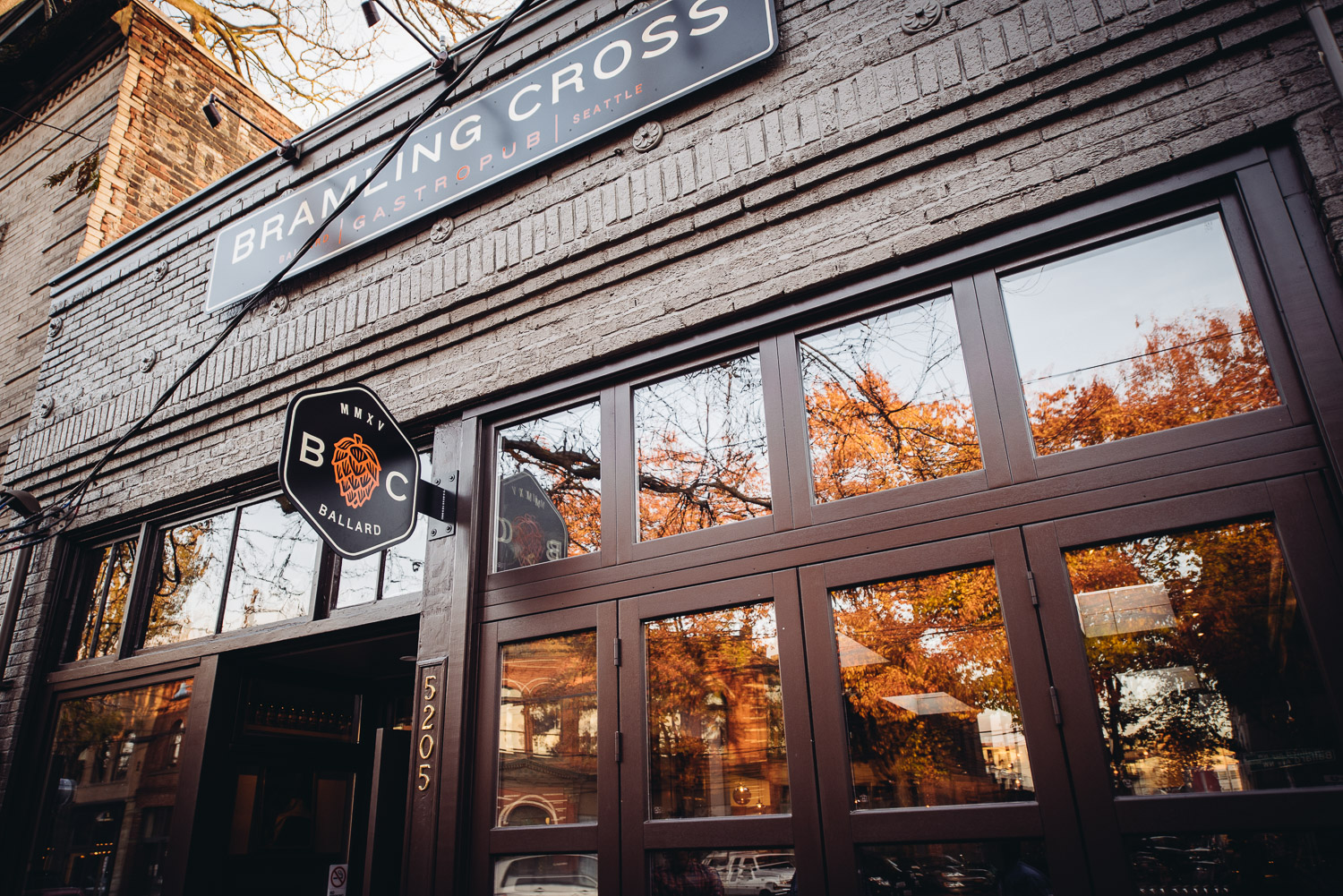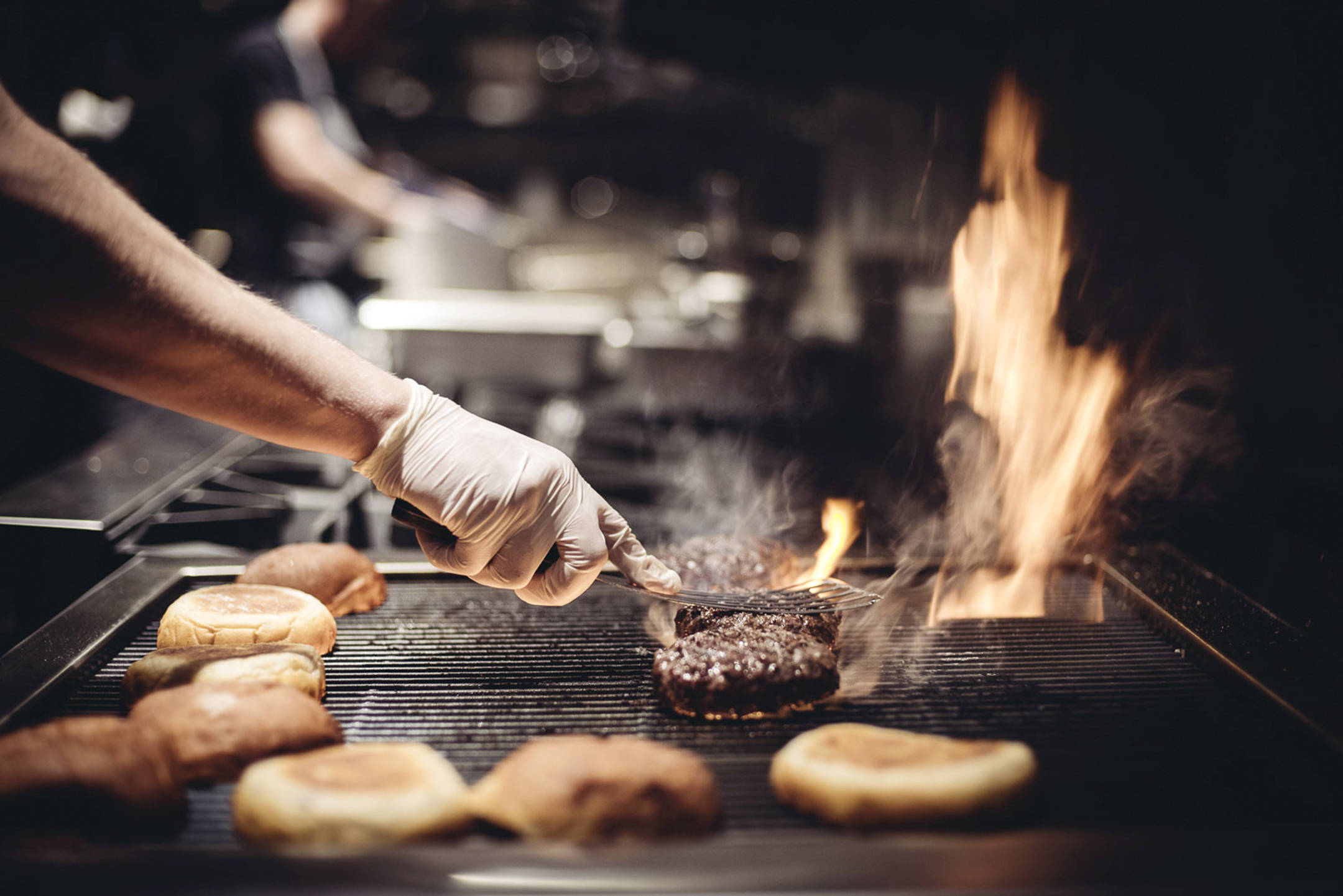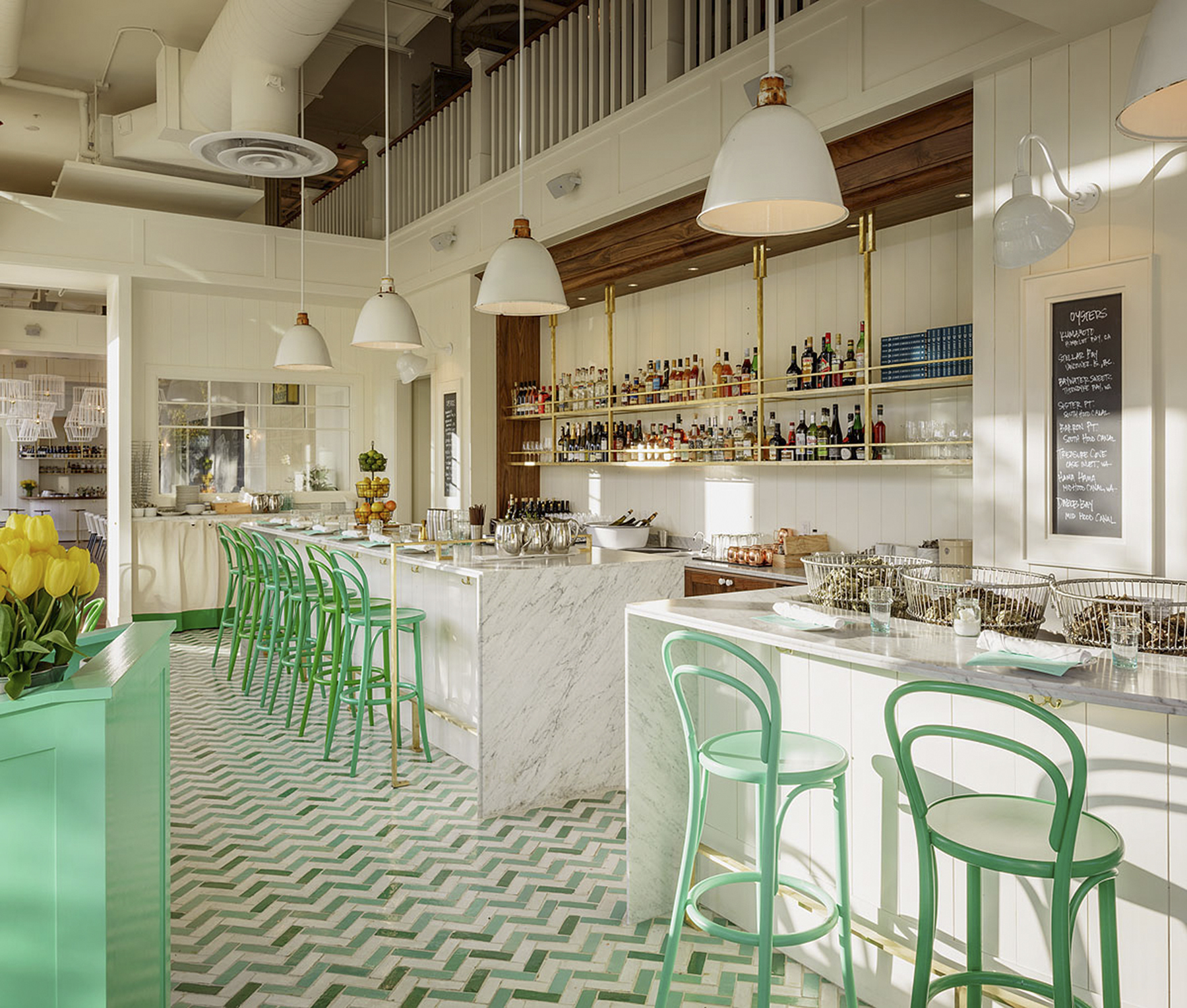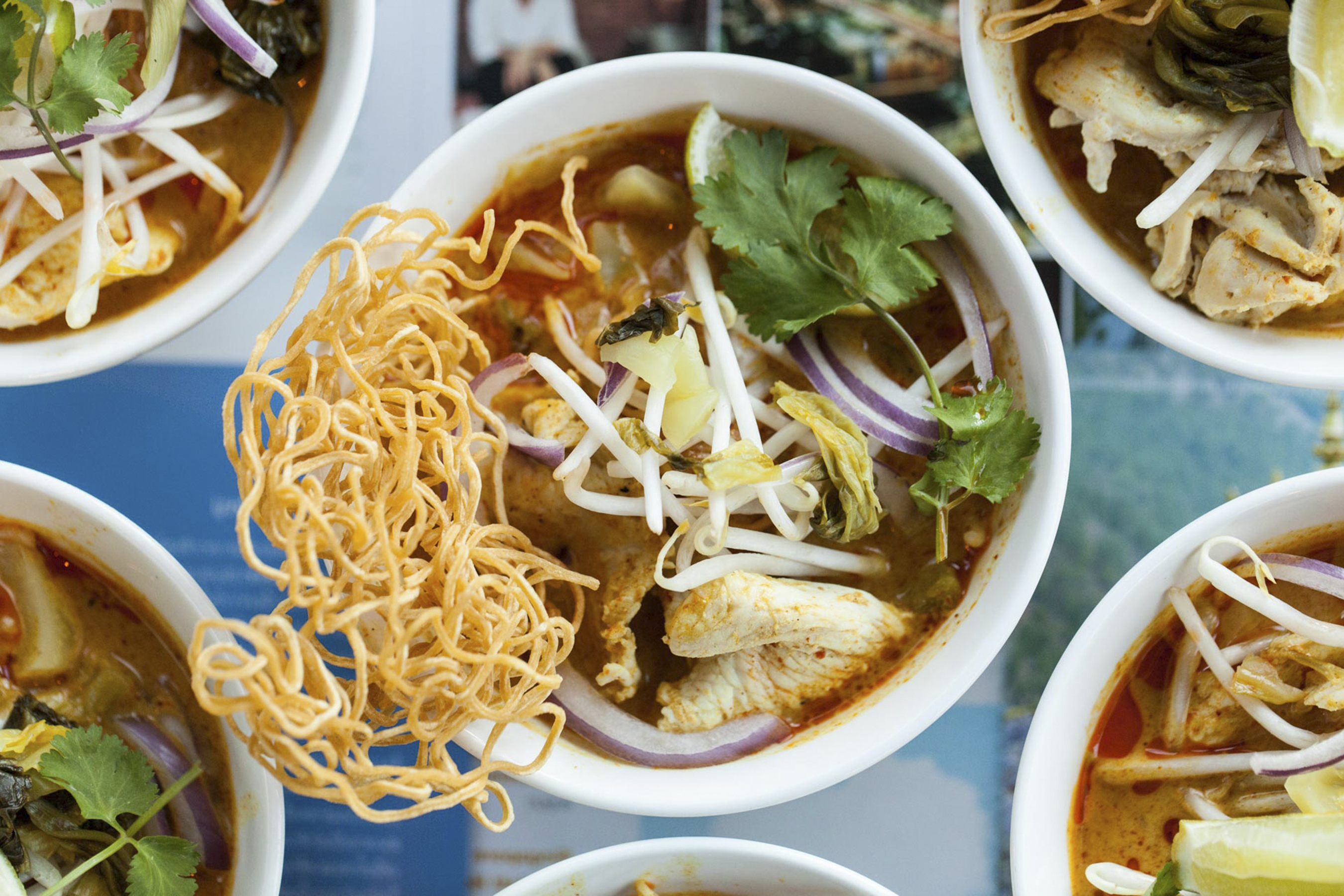When I reviewed Brimmer & Heeltap in Ballard a few months back, I noticed something on their “Late Night” menu (available 10 p.m.–close) called “Our Family Meal.” It was described as “eat what we eat, price and preparation change daily.”
Bascially, Brimmer & Heeltap had taken an industry routine—serving staff a meal before or after their work shifts—and made it more interesting. The food had to not just fill the bellies of their workers, but impress guests to boot.
Chef Mike Whisenhunt, who’s cooked at Joule and Revel, explains the idea: “I’ve come from many a restaurant that have little to no family meals, or it’s been disgraceful when we’ve had it. How can I expect our cooks to make great food when they’re not eating it? My goal is that we’re cooking food for customers that we’d serve ourselves.”
It also points to the desire to add value to jobs that don’t pay high wages: “I want to take care of my team as best I can. Everyone is worth so much more than what I can give them financially.”
Considering the staff meals will be on the menu later, you might assume that Whisenhunt makes his staff plan them and meet his approval, but not so: “I don’t think any of my cooks are green enough to put out something that you wouldn’t serve customers.” So far there have been no disasters. His only requirement: “It needs to be sustainable. I can’t get through a night on biscuits and gravy. If there’s fat in it, it needs something to balance that.”
No “gut bombs,” proprietor Jen Doak adds. Nonetheless, she says, it does raise the bar for cooks, who get a chance to conceive and prepare a meal for diners, and levels the playing field. So what’s been on the menu?
For a time they were doing ramen nights, which gained a bit of a cult following—though with the warm weather, they’ve been phased out. One cook makes tortillas from scratch, another likes to do street food like pupusas, a Salvadoran stuffed flat bread. They’ve also had grilled cheese sandwiches with smoked tomato soup, Vietnamese-inspired chicken soup, cabbage rolls, and burgers made out of chuck-steak scraps (a great way to utilize leftovers). The family meals have taken some time to catch on with diners, but some nights have seen a full house at 11 p.m.
Finances certainly play into the decision to provide a family meal—or not. Doak estimates that on average, raw food costs alone are $2 a person a night for their staff of 15. With restaurants’ tight margins, she says it does impact their financials, but “we [she and Whisenhunt] have to come in and look our team in the face every day.”
Like Whisenhunt, Doak has worked in her share of restaurants where either no meal was offered to staff, or it was too vile to eat. “Even if the restaurants just took some of their scraps . . . it’s not as difficult as it seems,” she says.
Hearing about these family meals made me curious as to how other restaurants handle them (not all serve them), so I nosed around for other stories. These meals don’t need to cost all that much, and, according to the chefs interviewed here, they bring much-needed sustenance and camaraderie while providing an opportunity to try out new dishes.
Over at mkt., Ethan Stowell’s newish Tangletown restaurant, executive chef Joe Ritchie feels strongly about the staff meal, which is served at the end of the night, when the last diners are sometimes lingering at 10 or 11 p.m and when everyone can take a breather, and not just gulp down their food. “It’s a way to unwind and let out any tension that’s arisen,” he says. “It’s a fast-paced, high-friction environment, and people can rub each other the wrong way.” But when everyone sits down together with a meal and a glass of wine, it’s a nice way to unwind. “As professionals in the industry, we spend our whole day cooking and serving people. We shouldn’t just be slaves of the trade, but have some quality of life. It’s a nice perk for all the kitchen staff too.”
But Ritchie also looks at the time as an opportunity. “It’s not just some halfhearted attempt to feed people. I try to make it representative of us as cooks, to put some effort into it.” To that end, on Saturday nights they do paella, Wednesdays and Thursdays some kind of soup. It’s usually not the same style of food they put on the menu, but more ethnic in nature. “We don’t blow the budget, but we make things that people want to eat. Mexican food is always popular. Everybody loves that. Breakfast for dinner, pancakes and eggs, are a hit too.
“As a cook you learn that if you deep-fry anything, it’s going to be pretty popular. Also, one of the other cooks and I will do a seafood soup with white wine and fish scraps,” which Ritchie says allows them to use up leftovers. “Following a big holiday, we have a really doggone good meal.”
He even gives the servers a chance to cook: to try something they’ve made at home, for instance. Selfishly, he admits, the family meal also prevents him from having to cook for waiters who order from the bar. Though Ritchie says not every Ethan Stowell restaurant does a staff meal, he’s insistent on keeping one at mkt.
At Tilth in Wallingford, the family meal takes place before dinner service, which makes it more of a rush, but no less appreciated.
“We love family meal. It’s a morale-booster for everyone before service, and our cooks take a lot of pride in it,” says executive chef Jason Brzozowy. “It’s a way for them to show off their skills and creativity.”
He says the cooks typically prepare comfort food, like meatloaf and mashed potatoes, tacos, or some sort of spicy pork with veggies and rice. What never changes: a bottle of Sriracha or sambal oelek on hand.
Tilth also has some traditions. Once a month on “new menu day,” one server will cook the family meal since the kitchen is extra-busy making all the soon-to-premiere dishes for the staff to try. “And if a server or cook is leaving us, we make whatever they want for their ‘last meal’ as a way to show our gratitude for their hard work.”
Asked about hands-down favorite meals among the staff, Brzozowy immediately throws out the “ultimate baked-potato bar” and the “ultimate taco bar.” What makes them “ultimate?” Anything and everything: leftover scrap proteins like pork belly, goat, hangar steak, and duck; brunch leftovers such as sous vide eggs and smoked chicken gravy; and more typical toppings like creme fraiche, shaved onions, and chives. And, of course, the Sriracha.
And then there’s the meal Brzozowy calls a blessing and a curse, “death fries” —basically just an over-the-top version of poutine, which is already over the top. “The staff loves it until we have to work through a busy night’s service when, really, a nap would be more in order.”
nsprinkle@seattleweekly.com
